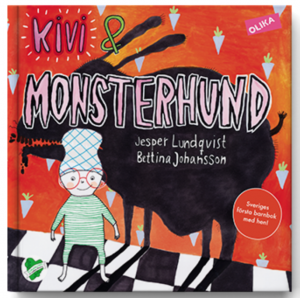A note on Swedish hen
You may have heard of the gender neutral Swedish pronoun “hen“. Sweden have been debating this during the past decade. Some people feel strongly about it. So what’s the fuss all about?
Swedish gender and pronouns
The Swedish language, like German, used to have three grammatical genders: masculine, feminine and neuter. This started to change during the 14th century and the Swedish language today has two grammatical genders. Firstly, the common gender (indefinite article en and pronoun den). This is a merged form of masculine and feminine. Secondly, the neuter gender (indefinite article ett and pronoun det).
Swedish also uses the third person pronouns han he and hon she for humans, known animals, and when biological gender is of interest. But what if you don’t know the gender of a person? Or if it is irrelevant?
Consider a situation where you say you need to book an appointment at the dentist, and you hope that he/she/the dentist will be able to help you with your toothache. You may not want to assume that the dentist is a woman nor a man. Some people find saying ‘he or she’, or ‘s/he’ to be pretty clunky (especially in speech – how on earth do you pronounce ‘s/he’?), and to say ‘the dentist’ again may sound repetitive. So what can you say?
In English, you can of course say ‘they’ – you hope that they will help you with your toothache. However, in Swedish, you do not use the third person plural for a singular person. In other words, you cannot say de they in this case.
Swedish hen gets published
Lately, a new, gender-neutral pronoun has started to become more popular in Sweden – hen. We define the pronoun hen as a gender-neutral personal pronoun intended as an alternative to the gender-specific hon (‘she’) and han (‘he’).
You can use it to avoid a stated preference to either gender, and also as a way to referring to individuals who are transgender, agender, non-binary or those who reject the idea of binary gender. Even though this is a relatively new phenomenon in Swedish, several languages have gender-neutral pronouns.
Finnish, for example, only uses a gender-neutral pronoun in third person. The word has been proposed in Sweden several times, first time in 1966 and again in 1994, but it did not receive wider acknowledgment until the book Kivi och Monsterhund came out in 2012. It is the first book that only uses hen as a personal pronoun, instead of han and hon. And the book caused a widespread debate in Sweden.
The author, Jesper Lundqvist, wanted to write a book for children – rather than for girls or boys. This was the main reason why he used hen in his book. He said he found it liberating to write directly to children. This way, he didn’t have to think about all the stereotypical associations that surround boys and girls. Jesper says that some have misunderstood the whole idea of hen, and thought of it as a way of replacing han and hon. But this is not correct. Rather, it is more about having an “extra tool in the tool box”, linguistically speaking, he says.
Reactions to Swedish hen
The reactions among the Swedish native speakers were both mixed and passionate, to say the least. Those who did not like it usually fell into one (or several) of three categories of arguments:
- This was an attempt to linguistically eradicate male and female gender roles, perhaps highlighted by its use in a particular pre-school in Stockholm, something which sparked debate and controversy in Sweden and also received media attention internationally.
- There already existed functioning words like personen the person or vederbörande the person in question.
- Those who associated hen to the English word for a female bird. This argument is perhaps a little problematic, given many other Swedish words that mean something else in English (barn child, fart speed, bra good, prick dot, puss kiss, kiss urine, and so on).
Interestingly, another reason for the resistance to this new word may be that personal pronouns belong to what we may call ‘closed word categories’. Typically ‘open word categories’ are verbs, nouns and adjectives. These are categories where most people welcome new additions and creative solutions. The closed categories, like personal pronouns or prepositions, not so much.
The Swedish Academy included the gender-neutral pronoun hen into their dictionary in 2015, with the advert slogan ‘Hen är här nu’ (Hen is here now). The debate is still on going, although we can probably assume that it will fizzle out with time and the pronoun will be fully absorbed into everyday Swedish.







